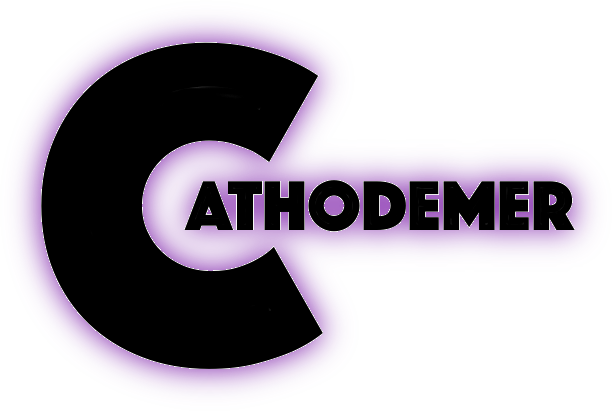Frequently Asked Questions
After the display configuration screen the app just crashes. This is usually because the program settings file has become corrupted. Solution:
On Windows, try deleting the settings.ini file found at C:/Users/-your-user-name-/AppData/Roaming/Cathodemer
or on Mac, it's found at Finder -> Go -> Go To Folder -> "/Users/-your-user-name-/Library/Application Support/Cathodemer.
On the very latest macOS you might need to use terminal and some unix commands to access that folder.
After deleting the file, try running Cathodemer again. It will create the settings.ini file again.
How to use audio input for Source part visualization ?
Cathodemer has no virtual audio ports, but uses the input device selected at startup.
To stream audio from other apps running on the same computer, use a third party
virtual audio device, like VAC for Windows
or SoundFlower or Loopback for macOS.
Make the virtual port a system default device, and then route other app signals through it.
Note that the Soure audio visualization base color is defined by the alpha channel HSV sliders.
How to use audio input for parameter control ?
The audio input works just like the MIDI input, that can be assigned to some control with (2nd mouse button/ ctrl+apple mouse) and Arm Audio L/R. In the Extra tab Audio panel defines how much the audio signal affects a control. Base sets what is the resting position value and Change defines how much the audio signal can move the value from the resting point up or down. At center it does no effect. Gain just makes the audio signal stronger or weaker. In Amplitude mode the audio volume level defines the control and in Frequency mode audio pitch, roughly.
Why is 720p or larger CRT resolution so slow ?
When trying to use high definition resolutions for the virtual CRT screen, the idea of the application is misunderstood. The program simulates an analog television/vhs signal that (in real life) would be NTSC/PAL resolution at best. Instead, the render window can be set to 720p or larger without limit, and by setting virtual screen position and pixel size to correspond the HD window where it's presented, it's possible to render in 720p, 1080p or better resolutions. The overlapping pixels are just larger, but the post-processing shaders are more high definition.
New on version 2.3
New renderer mode dumps the video signal to a single texture that is drawn into a rectangle. This will improve the speed and quality greatly on older machines and display adapters, while losing much of the crt-ness of picture. Exotic display shapes are not available in Texture mode.
Output has annoying lines over the picture
Some display adapters can't handle pixel blending the correct way, resulting lines on pixel borders. This usually happens with adapters not able to handle OpenGL 4.0 and later. One way to get the screen smooth is adjusting the screen zoom, pixel size and giving a slight blur shader from the Extra view.
New on version 2.3
New renderer mode dumps the video signal to a single texture that is drawn into a rectangle. This will improve the speed and quality greatly on older machines and display adapters, while losing much of the crt-ness of picture. Exotic display shapes are not available in Texture mode.
How to open file or webcam source ?
This is described in the internal manual: From the top program menu bar, select Source -> Open Camera/Stream/File. After selecting the source it's assigned into the open Source part. Now switching the Source part Online will start the source playback.
How can I render the output in H264 on Windows ?
In order to encode video to H264 on windows, OpenH264 must be installed to system. It can be found here https://github.com/cisco/openh264/releases. Get the 64bit windows dll version and put it into your system folder (recommended), or into Cathodemer folder.
